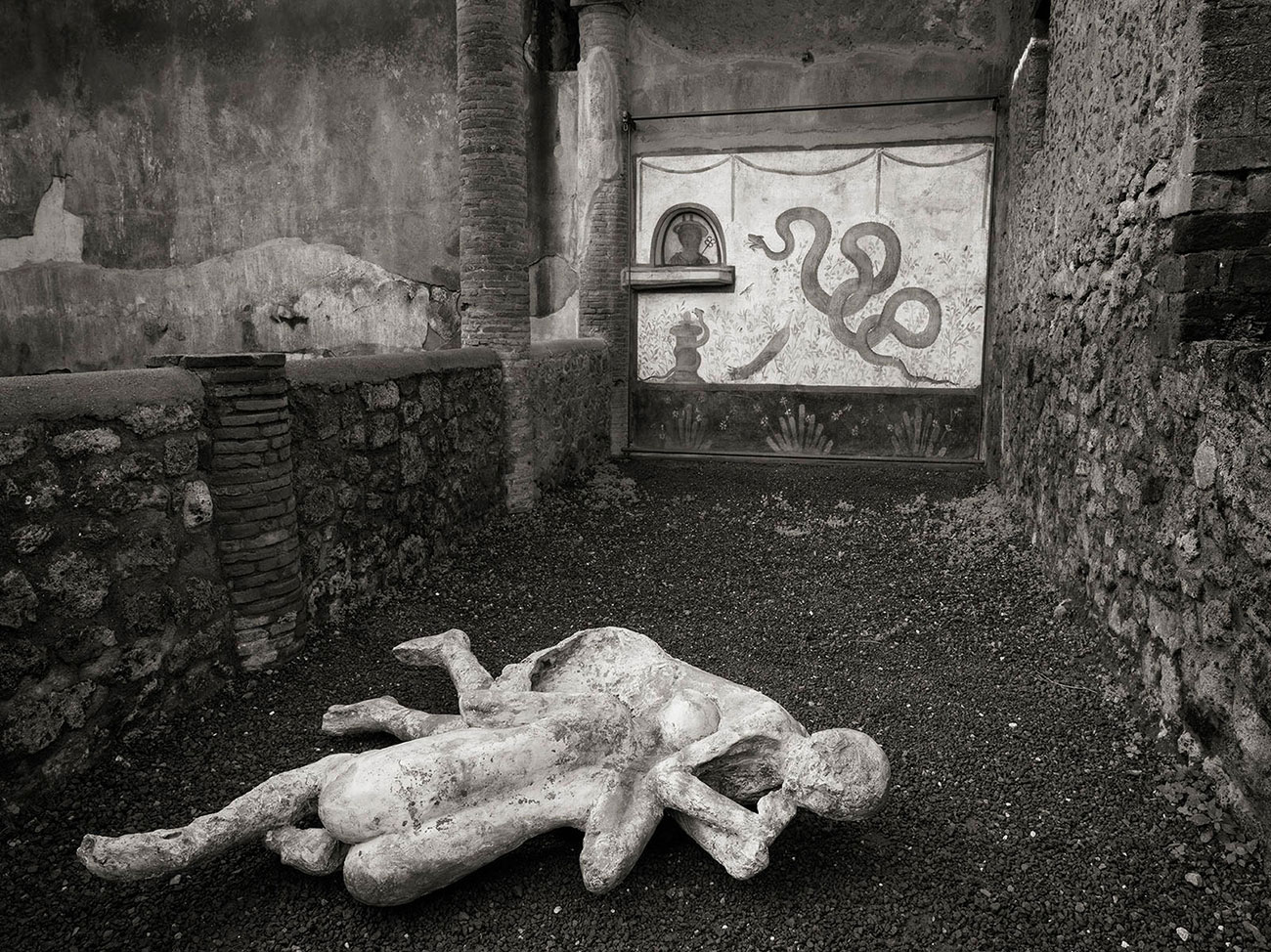
“Pompeii years after the AD 79”
Pompeii was an ancient Roman city in the south of Italy, and came under the domination of Rome in the 4th century BC, and was conquered and became a Roman colony in 80 BC.
The city was destroyed and buried under 13 to 20 ft. of volcanic ash by the eruption of Mt. Vesuvious in 79 AD.
By the time of its destruction, its population was estimated at 11,000 people, and the city had a complex water system, an amphytheatre, gimnasium, public bath houses and a port.
Since the eruption, the city was lost for about 1,500 years until its initial rediscovery in 1599 and broader rediscovery almost 150 years later by Spanish in 1748. The objects that lay beneath the city have been preserved for centuries because of the lack of air and moisture.
These artefacts provide an extraordinarily detailed insight into the life of a city during the Pax Romana.
During the excavation, plaster was used to fill in the voids in the ash layers that once held human bodies. This allowed archaeologists to see the exact position the person was in when he or she died. Some of the human plaster casts contain fragments of scull, nail or teeth, as if these are a remaining of the people who were killed by the eruption some 1900 years ago.
The original human casts are kept in an archive building within the Pompeii site. Because of its sacredness and fragility, they have been prohibited to move to other locations.
The second generation copies of the human casts have been loaned out to museums for exhibitions, locally and internationally, but never allowed individual photographer to place them to desired locations to photograph.
With a courtesy and a support of the Ambassador of Japan in Rome, the authority of Pompeii provided an exceptional permission for Izu to compose and photograph at the Pompeii sites accompanied with a selection of the copy of the human casts.
Farther, the Pompeii authority has permitted Izu to photograph the original human casts in the archive building as “portraits” of the people of ancient Pompeii.
For the work of <Requiem>, I have created the imaginary scene of sometime after “the day”, when the lives were vanished, by the eruption of Mt.Vesuvious, but among the scattered dead people, plants have started grow again.
The huge volcanic eruption more than 1900 years ago, is as if, a nuclear explosion of today.
This thought made me a fear of its’ possibility to take place anytime now to us.
Kenro Izu, 2019
